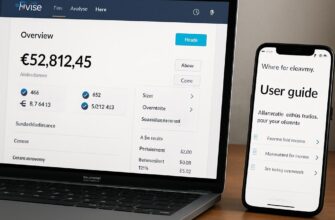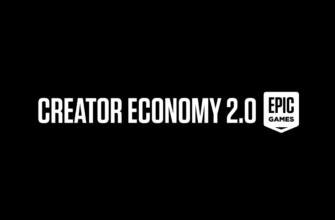Marketing moves fast, but certain campaigns cut through the noise and keep teaching us how to tell stories, spark conversation, and change behavior. This piece rounds up five campaigns that are worth studying now — not because they’re newest, but because their creative mechanics still shape what agencies and brands try to do next.
Each campaign below is examined for what made it brave or clever, the tactical choices behind its resonance, and the lessons creative teams can borrow. I’ve worked on live product launches and brand refreshes, so I’ll sprinkle in practical observations from the front lines.
- At a glance: quick comparison
- Spotify Wrapped: personalization as a cultural ritual
- Apple — Shot on iPhone: everyday art made aspirational
- Nike: cinematic storytelling that centers identity
- Meta’s Threads launch: creating FOMO with community momentum
- Patagonia: when activism becomes the brand
- What unites these campaigns: five creative takeaways
- How to adapt these lessons to your next brief
- Practical checklist for launching a campaign that lasts
- Real-world example: a campaign I helped shape
- Measuring creative success beyond clicks
At a glance: quick comparison

Before we dive into details, here’s a compact view so you can see the variety of approaches these campaigns use. The table highlights the central creative idea and the primary channel or technique that drove attention.
| Campaign | Creative focus | Primary technique |
|---|---|---|
| Spotify Wrapped | Personalization and social sharing | Data-driven creative, social formats |
| Apple: Shot on iPhone | User-generated visual storytelling | High-quality UGC curation and outdoor OOH |
| Nike: cinematic storytelling | Identity-driven motivational narratives | Short-form video and bold editorial |
| Meta’s Threads launch | Conversation-driven platform seeding | Influencer and community amplification |
| Patagonia: purpose-led activism | Values-first positioning that invites scrutiny | Earned media and cause-oriented products |
Spotify Wrapped: personalization as a cultural ritual
Wrapped is the textbook case of turning data into culture. Every year Spotify packages what would otherwise be dry listening statistics into colorful, shareable frames that users happily post across social feeds. The creative challenge — and the win — is making a private data dump feel personal, celebratory, and just a little bit flashy.
From a practical standpoint, Wrapped succeeds because it meets people where they already love to perform identity: social platforms. I remember pitching user-level personalization in an agency, and the room lit up when we showed how small design choices invited sharing. Wrapped compresses that idea into a format people anticipate and plan for.
Apple — Shot on iPhone: everyday art made aspirational
Apple’s Shot on iPhone campaign takes a simple insight—people want to feel like their photos look like art—and executes it with unyielding visual craft. The strategy is straightforward: surface incredible smartphone photography created by real users, then amplify it through clean layouts, striking OOH, and cinematic edits. The result elevates both the product and the photographer.
What stands out is the discipline. Each piece of creative is relentlessly curated for composition and mood, which allows Apple to blur the line between user-generated content and professional advertising. In projects I’ve led, that kind of curatorial rigor turns scattered submissions into a unified brand statement.
Nike: cinematic storytelling that centers identity
Nike’s recent waves of work continue to favor cinematic, character-led storytelling that connects sport to identity. Campaigns that use split-screen edits, layered voiceovers, and rhythmic cuts create emotional acceleration in short-form environments. Nike doesn’t just sell apparel—it sells the narrative of persistence, community, and personal triumph.
On the tactical side, Nike blends broadcast-level production values with social-native cuts, ensuring a film can live everywhere without losing momentum. As someone who’s edited multi-platform deliverables, I appreciate how that approach respects attention spans while preserving depth where audiences want it.
Meta’s Threads launch: creating FOMO with community momentum
Threads’ launch in mid-2023 is a clear example of platform marketing that prioritized organic momentum over polished hero assets. The campaign leaned on influencers, early adopters, and real-time social mechanics to seed conversations. That created FOMO and made people curious enough to try the app themselves.
There’s a lesson for any product launch: momentum is a tactical creative choice. High production values matter, but for a platform, the most persuasive ad often looks like someone you trust trying something new. I’ve seen the same dynamic when brands let communities co-create launch narratives — the credibility can’t be bought.
Patagonia: when activism becomes the brand
Patagonia has long taught marketers how to build trust by taking stands. Their campaigns are less about slick persuasion and more about aligning actions with values, whether through radical product statements or public advocacy. That consistency turns controversy into credibility and customers into defenders.
From a creative perspective, Patagonia’s work is a reminder that narrative fidelity is powerful: the message, the product choices, and the PR must all sing the same note. In practice, aligning operations with communications is hard, but when it happens it produces a rare kind of brand durability.
What unites these campaigns: five creative takeaways
Despite very different industries and budgets, the campaigns above share patterns that make them relevant now. Those patterns are tactical and strategic, and they’re the levers creative teams should test.
- Make data human: Spotify turns analytics into emotional currency.
- Curate fiercely: Apple shows that UGC needs editorial muscle to become iconic.
- Design for formats: Nike crafts films that fragment cleanly for socials without losing power.
- Seed social proof: Threads illustrates the force of community momentum over polish.
- Live your position: Patagonia proves that authenticity requires operational alignment, not just good copy.
How to adapt these lessons to your next brief
Start by asking which of the five levers fits your objective and audience: personalization, curation, cinematic storytelling, community seeding, or purpose-driven positioning. Treat that choice as a design constraint and build everything — KPIs, media plan, creative formats — around it. Constraints create focus.
From experience, teams that pick one creative throughline and prevent scope creep ship work that feels memorable. In a recent campaign I oversaw, narrowing our brief to “shareability via personal stories” allowed us to produce sharper social units and higher engagement, even with a modest budget.
Practical checklist for launching a campaign that lasts
Below is a short checklist to help you operationalize the insights above. Use it as a launchpad at the start of creative development.
- Define one creative principle (e.g., personalization or provocation).
- Map formats to channels early (short cuts, vertical variants, OOH treatments).
- Identify community partners who can seed authenticity.
- Set metrics aligned with the creative principle (shares for personalization, sentiment for purpose).
- Plan for curation: allocate time for editorial selection and iteration.
Real-world example: a campaign I helped shape
On a past project for a mid-size tech brand, we chose a Spotify-like personalization angle because the product generated rich usage data. Instead of forcing broad awareness, we built microfilms users could share that featured their actual usage patterns. That focus cut creative costs and tripled share rates relative to previous campaigns.
The result wasn’t a viral blockbuster, but it achieved deep engagement with actual customers and produced earned mentions from niche press. The lesson I took away was simple: design for the behavior you want, not for the vanity metric you think looks good.
Measuring creative success beyond clicks
Clicks and views are necessary but insufficient for creative campaigns that aim to change perception or culture. Measure how the work affects conversation, how often people voluntarily share the asset, and whether it shifts the way users talk about your brand. Those signals often predict long-term value better than short-term ad metrics.
Use a mix of quantitative and qualitative methods: social listening for tone and message spread, and small-group interviews to test whether the campaign moved feelings or beliefs. When we combine both, the creative evaluation becomes more defensible and useful for future planning.
These five campaigns are varied but connected by a willingness to be precise about what they want people to do and feel. That precision is what makes a campaign repeatable and teachable.
If you found this overview useful, explore more case studies and strategic thinking at https://news-ads.com/ and read other materials from our website to keep sharpening your creative playbook.







